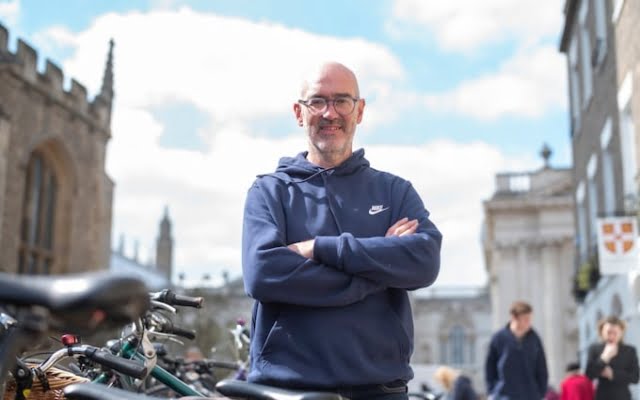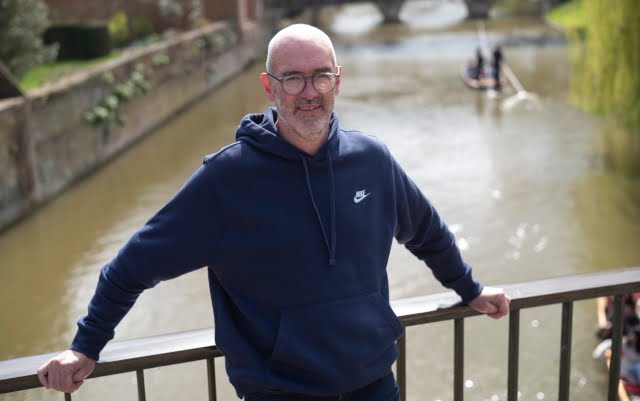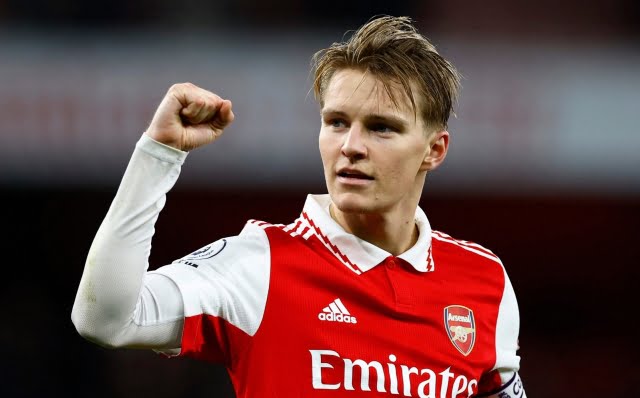 League Cup winner Steve Morrow felt nothing but pain shortly after the final whistle. Photo: David Rose for Telegraph
League Cup winner Steve Morrow felt nothing but pain shortly after the final whistle. Photo: David Rose for Telegraph
It It took Steve Morrow 40 minutes to go from hero to punchline. Thirty years ago, the former Arsenal utilitarian scored the winning goal in the League Cup final, but most people only want to know what happened next.
Teammates and Arsenal staff congratulated him on his performance at Wembley after a rare goal secured a 2-1 win over Sheffield Wednesday. Then Tony Adams came up. “He was so exuberant, but he could be a little awkward at times,” says Morrow. “He just grabbed my ankles and I knew when he lifted me I felt unsteady. He lost his balance, I lost my balance and fell over his shoulder. It seemed to me that it was a long way down.
“The only way to prevent a fall is to put your hand out, and I immediately understood this. I felt incredible pain and my arm was just pointing in the wrong direction.”
Morrow broke his humerus, shoulder bone. “Gary Levine [Arsenal physio]” came over and I remember the look on his face. He said he had never seen anything like it, this shape.”
A crowd formed around him, then the memories became vague: they put on a mask and an ambulance goes to the hospital. Meanwhile at Wembley, his teammates lifted the cup which Morrow won for them. “Someone told me later that Tony Adams took off his shoes and threw them into the crowd. He also offended someone with them.”
🗓 #OnThisDay in 1993: a memorable day for Steve Morrow…
League Cup Final points winner 🏆
Breaks arm in full feast 🤕 pic.twitter.com/apOK1P1Ffd
— Arsenal (@Arsenal) April 18, 2019 > The pain on Morrow's face after the fall was obvious, for his joy at Wembley soon gave way to despair. Photo: Getty Images/Shaun Botterill
Even in retirement, most football players stand out on the civilian street. There is a certain radiance to the face and a general heaviness in the body that often deviated from the taste of middle age. Not so with Morrow, who looks lean like a middle-distance runner. Unassuming in a navy Nike sweatshirt, he blends in with the crowds of tourists and families in a Cambridge coffee shop.
He's a diligent man who combined hard work at Arsenal in the 1990s with a degree in sports science. He can still remember his career in great detail, down to specific team conversations. There is no malice towards Adams, who was one of the first to visit him in the hospital with a case of Veuve Clicquot.
Morrow got the cup the day after the game when teammates brought him to a hospital bed. When Arsenal returned to Wembley for the FA Cup Final a month later, he was awarded a medal, but another six months passed before he could play again. “Psychologically, it cast a shadow and there were very difficult days.” says Morrow.
“Mental health awareness in the game today is very different from what it was then. If you used that phrase back then, saying you were struggling with your mental health, they would probably look at you and chuckle a little.»
 In the months following his League Cup torment, Morrow went through some 'very difficult days' but never felt any ill will towards Tony Adams. Credit: David Rose for Telegraph
In the months following his League Cup torment, Morrow went through some 'very difficult days' but never felt any ill will towards Tony Adams. Credit: David Rose for Telegraph
However, he quickly realized that for many people, his harrowing experience was also something to laugh at. “It was such an unusual incident that I knew I had to be able to laugh at it. But I also scored the winning goal in the cup final, which is quite unusual. So I reminded people of that.”
It wasn't the game he loved most at Arsenal, it was the Cup game. Cup win over Parma in 1994 when he excelled in defensive midfield. Morrow had to watch not only Gianfranco Zola with his penchant for deep losses, but also the attacking attacks of Thomas Brolin and Faustino Asprilla, another striker who liked to drift between the lines.
«Steve Bould and Tony Adams could don't let me out of the area, they talked to me all the time in that game. Now they call it scanning, we just called it checking your shoulder, being aware of what is behind you.
After Arsenal, there was a bad spell at QPR before he ended his playing career at Dallas, where he became manager for two years. He returned to Arsenal to oversee the club's international partnerships and later became their head of youth development, taking over many of the pillars of Mikel Arteta's current side.
His job, as he did during his game, was valuable. but often unglamorous. Part of it was convincing families of talented players that Arsenal was the best place for their child. The first to leave was Martin Odegaard.
“I told Arsène [Wenger] that he is the best 15-year-old I have ever seen and it was between us and Madrid to sign him. He visited us and we invited them to dinner, Arsen, me and Ivan Gazidis. He left the next day and I felt like we had done our job. I think he made it to Madrid and Ronaldo picked him up in a private limousine, making his head spin.
Maybe they should have taken him to a better restaurant? “It was Arsene's favorite at Finchley. But in the end he returned. I'm just happy he's the player I thought he was now."
 Martin Odegaard was the best The 15-year-old Morrow saw was part of Arsenal's structure. Photo: Reuters/Peter Cziborra. -15. He found his influence limited, especially at the top level, where you're unlikely to find someone who hasn't already come into the limelight, so he decided to leave.
Martin Odegaard was the best The 15-year-old Morrow saw was part of Arsenal's structure. Photo: Reuters/Peter Cziborra. -15. He found his influence limited, especially at the top level, where you're unlikely to find someone who hasn't already come into the limelight, so he decided to leave.
He's now contemplating his next move, contemplating a role technical director. He will be useful wherever he goes.
























































Свежие комментарии